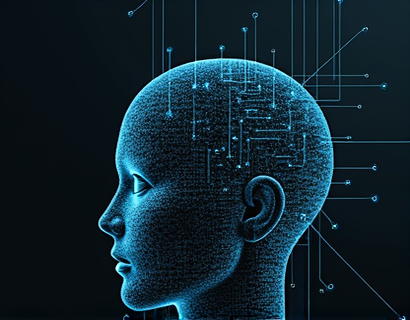Transforming Healthcare Decision-Making with AI-Powered Chat Interfaces
In the rapidly evolving landscape of healthcare, the integration of artificial intelligence (AI) is revolutionizing the way information is accessed and utilized. One of the most significant advancements in this domain is the development of AI-powered chat interfaces designed to provide immediate and comprehensive access to critical knowledge, particularly in the Intensive Care Unit (ICU) setting. These interfaces are not just tools for information retrieval but are transforming the way healthcare professionals, caregivers, patients, and administrators interact with complex medical data.
Enhancing Communication and Decision-Making
The primary goal of these AI-driven chat interfaces is to enhance communication and support informed decision-making in healthcare settings. For ICU staff, the ability to quickly access detailed information about patient conditions, treatment options, and industry best practices is invaluable. This immediate access to comprehensive data can significantly improve the quality of care provided, leading to better patient outcomes.
For caregivers, these chat interfaces serve as a vital resource, offering reassurance and guidance during challenging times. The ability to instantly retrieve accurate information about a loved one's condition and treatment plan can alleviate stress and anxiety, allowing caregivers to focus on providing emotional support.
Healthcare administrators benefit from these interfaces as well, as they provide insights into industry trends, operational efficiencies, and compliance requirements. This information is crucial for making strategic decisions that can enhance the overall performance and reputation of healthcare institutions.
Comprehensive Knowledge at Finger Tips
The AI-powered chat interface is designed to be a one-stop-shop for all ICU-related information. Users can access detailed descriptions of ICU services, including the range of treatments available, the expertise of the medical team, and the facilities provided. This level of transparency helps build trust and confidence among patients and their families.
Beyond basic service information, the chat interface offers in-depth insights into the ICU industry. Users can explore the latest research findings, technological advancements, and best practices in patient care. This continuous flow of up-to-date information ensures that healthcare professionals stay informed and can apply the most current knowledge in their practice.
Patient and Family Education
Education is a critical component of patient care, and the AI chat interface plays a pivotal role in this aspect. Patients and their families can gain a better understanding of their condition, the treatment options available, and the potential outcomes. This knowledge empowers them to make informed decisions about their care, leading to higher satisfaction and better adherence to treatment plans.
The chat interface can also provide personalized information based on the specific needs and questions of the user. For instance, a patient with a particular diagnosis can receive tailored explanations of their condition, treatment options, and lifestyle recommendations. This personalized approach ensures that the information is relevant and actionable.
Real-Time Updates and Alerts
One of the most powerful features of the AI chat interface is its ability to provide real-time updates and alerts. In the ICU, where conditions can change rapidly, having immediate access to the latest information is crucial. The chat interface can notify users of any changes in a patient's condition, new test results, or adjustments to the treatment plan.
For caregivers, these alerts can be particularly reassuring, as they receive timely updates without the need for constant monitoring of multiple sources. This feature ensures that caregivers are always informed and can promptly respond to any developments, enhancing the overall care experience.
Interoperability and Integration
The AI chat interface is designed to seamlessly integrate with existing healthcare systems and electronic health records (EHRs). This interoperability ensures that the information provided is accurate, up-to-date, and consistent with the patient's medical history. By accessing data directly from EHRs, the chat interface reduces the risk of errors and provides a comprehensive view of the patient's health status.
For healthcare providers, this integration means less time spent on data entry and more time focusing on patient care. The chat interface can automatically pull relevant information, such as medication lists, allergy histories, and previous hospitalizations, and present it in a user-friendly format. This efficiency not only saves time but also reduces the potential for human error.
Enhancing Collaboration and Coordination
The AI chat interface fosters better collaboration and coordination among healthcare teams. In the ICU, where multidisciplinary teams work together to provide comprehensive care, effective communication is essential. The chat interface facilitates real-time communication between doctors, nurses, pharmacists, and other specialists, ensuring that everyone is on the same page.
For example, a physician can quickly consult with a pharmacist about medication interactions or dosages, and the chat interface can provide immediate insights and recommendations. This level of collaboration can lead to more cohesive care plans and improved patient outcomes.
Supporting Remote Care and Telemedicine
With the increasing adoption of telemedicine and remote care, the AI chat interface plays a crucial role in extending ICU expertise beyond the hospital walls. Patients who are not physically in the ICU but require specialized care can still benefit from the comprehensive knowledge provided by the chat interface.
Healthcare professionals can use the chat interface to guide remote monitoring, provide advice on managing symptoms, and coordinate follow-up care. This capability ensures that patients receive continuous support and that any issues are addressed promptly, even when they are at home.
Ensuring Privacy and Security
In the realm of healthcare, privacy and security are paramount. The AI chat interface is built with robust security measures to protect sensitive patient information. Data encryption, secure authentication protocols, and compliance with regulations such as HIPAA ensure that user data is safeguarded at all times.
Patients and healthcare providers can use the chat interface with confidence, knowing that their information is protected. This commitment to security is essential for maintaining trust and encouraging widespread adoption of the technology.
User-Friendly Design and Accessibility
The AI chat interface is designed with the user in mind, prioritizing ease of use and accessibility. The interface is intuitive, with a clean and straightforward design that makes it easy for users to navigate and find the information they need. Voice recognition and natural language processing capabilities allow users to interact with the chat interface using simple, conversational language.
For users with disabilities, the chat interface is accessible, adhering to web accessibility standards to ensure that everyone can benefit from the available knowledge. This inclusive approach ensures that no one is left behind in accessing critical healthcare information.
Continuous Learning and Improvement
The AI powering the chat interface is continuously learning and improving. Machine learning algorithms analyze user interactions and feedback to refine the information provided, ensuring that it remains accurate and relevant. This ongoing improvement process helps the chat interface stay at the forefront of healthcare knowledge and technology.
Healthcare professionals can also contribute to the improvement of the chat interface by providing feedback and suggesting new features. This collaborative approach ensures that the chat interface evolves to meet the changing needs of the healthcare community.
Future Prospects and Innovations
As AI technology continues to advance, the potential applications of chat interfaces in healthcare are vast. Future innovations may include more sophisticated predictive analytics, enhanced personalization based on individual patient data, and integration with wearable devices for real-time health monitoring.
The ultimate goal is to create a seamless and integrated healthcare ecosystem where AI-powered chat interfaces play a central role in enhancing patient care, provider efficiency, and overall health outcomes. By leveraging the power of AI, the healthcare industry can move towards a more informed, efficient, and patient-centered future.










































